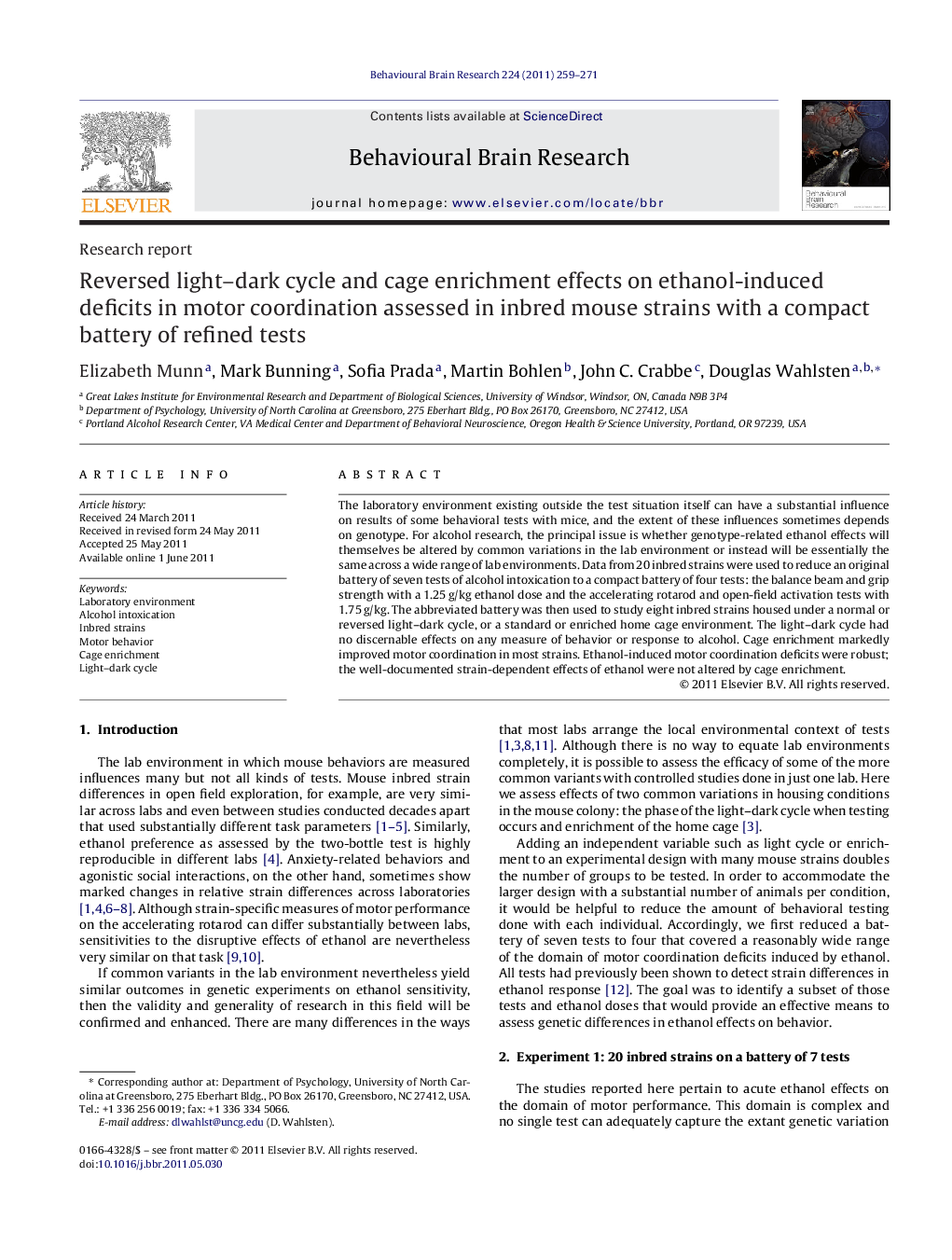| Article ID | Journal | Published Year | Pages | File Type |
|---|---|---|---|---|
| 4313645 | Behavioural Brain Research | 2011 | 13 Pages |
The laboratory environment existing outside the test situation itself can have a substantial influence on results of some behavioral tests with mice, and the extent of these influences sometimes depends on genotype. For alcohol research, the principal issue is whether genotype-related ethanol effects will themselves be altered by common variations in the lab environment or instead will be essentially the same across a wide range of lab environments. Data from 20 inbred strains were used to reduce an original battery of seven tests of alcohol intoxication to a compact battery of four tests: the balance beam and grip strength with a 1.25 g/kg ethanol dose and the accelerating rotarod and open-field activation tests with 1.75 g/kg. The abbreviated battery was then used to study eight inbred strains housed under a normal or reversed light–dark cycle, or a standard or enriched home cage environment. The light–dark cycle had no discernable effects on any measure of behavior or response to alcohol. Cage enrichment markedly improved motor coordination in most strains. Ethanol-induced motor coordination deficits were robust; the well-documented strain-dependent effects of ethanol were not altered by cage enrichment.
► Seven tests of rodent alcohol intoxication were reduced to a compact battery of four tests. ► Light–dark cycle had no discernable effects on any measure of behavior or response to alcohol. ► Cage enrichment markedly improved motor coordination in most strains. ► Ethanol-induced motor coordination deficits were large and robust. ► The well documented strain-dependent effects of ethanol were not altered by cage enrichment.
